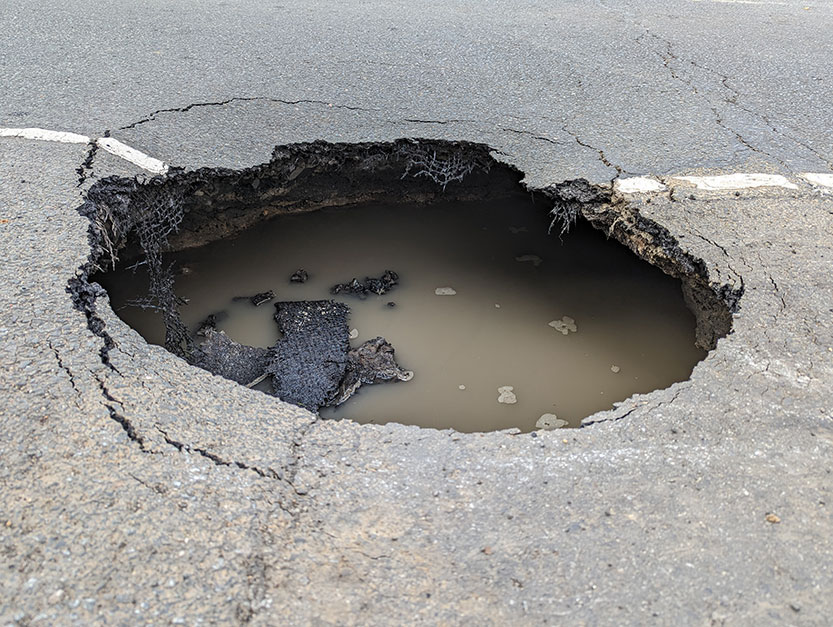Council to get to the bottom of sinkhole in Kensington
Traffic in Kensington came to a standstill after a sinkhole opened up on Macaulay Rd on December 6 following days of heavy rainfall.
The sinkhole, which occurred between Rankins Rd and Stubbs St about 5pm, was about one metre in diameter and about three-feet-deep, forcing the road to be closed in both directions, causing peak-hour traffic chaos.
While the circumstances of the incident are unknown, the City of Melbourne said it was made aware of the sinkhole with crews having attended the scene immediately to make the road safe by covering the hole with a plate.
“The cause will now be investigated, and permanent repairs carried out over the next week,” it said.
It’s not the first time a sinkhole has occurred in the city and surrounding area. In June 2020, a gaping hole on Collins St caused by a drainage crack was about two metres deep, while in Lygon St, East Brunswick, a leaking water hydrant caused a sinkhole to appear in November 2021.
In another incident, a 12-metre wide and five-metre-deep sinkhole at a park in Kew in April 2020 was believed to have been caused by a broken stormwater pipe.
University of Melbourne professor of infrastructure engineering Guillermo Narsilio told North West City News that sinkholes occurred for various reasons, but were more likely to appear when water was present.
“That can be made up of flooding or heavy rain or water coming from the rupture of a pipe. I suspect in this particular case [in Kensington] that that may be the case,” he said, but noted he did not know the particulars of the Macaulay Rd incident.

“Initially you don’t see much but erosion may be occurring under our feet causing a cavern and eventually that cavern collapses and what you see is a sinkhole.”
Prof. Narsilio said in naturally occurring sinkholes, water eroded an underlying rock and soil layer, forming caverns underground, which, when big enough, collapsed under the land surface. He added sinkholes were common, but they didn’t appear every day, noting “we notice those which produce more disruption”.
“Most of them go unnoticed because it doesn’t generate the level of pain for citizens that appear on main roads.”
Melbourne Water confirmed it was not involved with the incident on Macaulay Rd.
A resident said it was the first sinkhole they had heard of occurring in Kensington, noting crews had been conducting works in the vicinity of the area in the previous days, but there was no suggestion this had contributed to the cause. •
Caption: A sinkhole appeared in Macaulay Rd, Kensington. Photo: Contributed.

The Movement Refinery: 20 years and still going strong





 Download the Latest Edition
Download the Latest Edition